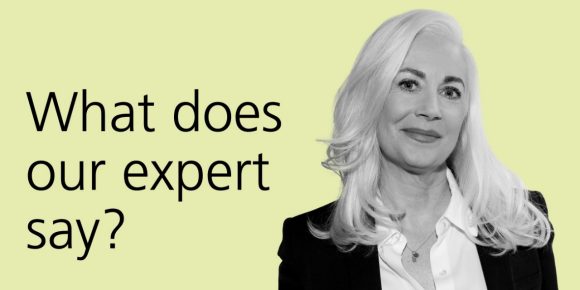What does our expert say? – Assets
Collecting art: Where do I start?
Building an art collection requires time and genuine passion. Tips for female art collectors by our expert Mary Rozell.

![]()
header.search.error
What does our expert say? – Assets
Building an art collection requires time and genuine passion. Tips for female art collectors by our expert Mary Rozell.

Why collect?
Art collecting is deeply personal, a reflection of the self and at UBS we believe that collecting is a passion project that pays emotional dividends, enriching lives.
What is the best way to start acquiring art?
See as much as possible. Go to galleries and museum shows on a regular basis. While nothing compares to seeing art in person, the Internet can also offer wonderful opportunities to learn about art. With its visual focus, Instagram is a great platform for discovery where even sophisticated collectors have been known to fall in love with artworks previously unknown to them. Art fairs are also a wonderful place to learn about new artists and works. The Art Basel fairs, which UBS sponsors, offer such a wide range of works from the global art market.
What do I have to consider when acquiring art?
Buy what you love, but also do your research. It can be easy to be seduced by artworks for their visual appeal, but it’s important to learn about the meaning behind the work, the artist’s production practices, where this fits in with the art historical canon, and whether or not a work is priced appropriately. For secondary market works – works bought not at the time of creation but after their original sales – another level of due diligence is necessary, focusing on a work’s authenticity, provenance and condition.
How do I recognize trends in the art market?
One can observe trends by following the market – attending galleries and fairs and noting dominant themes or media that emerge. The market also gives insight into what works are desirable at any given time. However, when buying art, following trends is not a good idea. Collectors should take a long view, consider what might emerge in the future, and buy work that they personally find compelling.
Prices in the art world sometimes seem unpredictable and lack transparency, especially to outsiders. How do I know what to pay for a work of art?
Through due diligence and research. Look at auction results and compare prices for comparable works or work by artists of the same stature. By paying attention to pricing over time, collectors can get a good sense of the market.
Young artists or proven ones, on whom should one bet?
One should not bet on artists. When buying art, one should consider their own interests, whether that be Old Masters or young emerging artists. Most art that appreciates significantly is not bought for investment purposes but rather out of passion. That being said, those who do the work and get to know the market gain an understanding of what might be good value.
How do I store artwork properly?
Appropriate artwork storage largely depends on multiple factors, including the work’s size, medium, the inherent nature of materials that compose the work, and geographical location. Generally, one could be advised to store artwork in a safe, dry place with limited light exposure, adequate security, and little vulnerability to the elements – e.g., hurricanes, forest fires, etc.
What other tips would you give to female investors who want to invest in art?
Before making a sizable, long-term commitment, understand what it takes to maintain and manage an art collection. It can be quite an undertaking and rather costly, so it is wise to be familiar with all the aspects involved. Given the historical inequities, collectors are now making an impact in focusing their acquisitions on work by female artists who have been overlooked by the market. This is something for female collectors in particular to consider.
If you would like to get more insights on the art market, consider reading our latest UBS Art Market Report.
Mary Rozell is Global Head of the UBS Art Collection, with over 30,000 artworks one of the world’s most important corporate assemblages of contemporary art. She is also the author of the recently-published "The Art Collector’s Handbook: The Definitive Guide to Acquiring and Owning Art" (Lund Humphries, 2020).
Because a personal conversation is worth a lot
What can we do for you? We’re happy to address your concerns directly. You can contact us in the following ways: